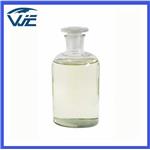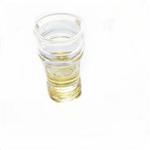- Valeraldehyde
-

- $4.00 / 1kg
-
2023-08-16
- CAS:110-62-3
- Min. Order: 1kg
- Purity: >99%
- Supply Ability: 4000ton
- Valeraldehyde
-

- $0.00 / 25KG
-
2023-06-29
- CAS:110-62-3
- Min. Order: 1KG
- Purity: 99%
- Supply Ability: 50000KG/month
|
| | Valeraldehyde Basic information |
| Product Name: | Valeraldehyde | | Synonyms: | Pentanal 95%;Valeraldehyde, Pentaldehyde;Valeraldehyde, 97% 250ML;PENTANAL FOR SYNTHESIS 100 ML;PENTANAL FOR SYNTHESIS 500 ML;Is valeraldehyde;Pentanal
Valeral
Valeric aldehyde;Pentanal for synthesis | | CAS: | 110-62-3 | | MF: | C5H10O | | MW: | 86.13 | | EINECS: | 203-784-4 | | Product Categories: | bc0001 | | Mol File: | 110-62-3.mol |  |
| | Valeraldehyde Chemical Properties |
| Melting point | -92 °C | | Boiling point | 103 °C | | density | 0.81 g/mL at 25 °C(lit.) | | vapor pressure | 36 hPa (20 °C) | | FEMA | 3098 | VALERALDEHYDE | | refractive index | n20/D 1.394(lit.) | | Fp | 54 °F | | storage temp. | Store at +2°C to +8°C. | | solubility | soluble in ethyl alcohol, ethyl ether, and other common organic solvents. | | color | Colorless to Light yellow | | Odor | at 1.00 % in dipropylene glycol. fermented bready fruity nutty berry | | Odor Type | fermented | | Odor Threshold | 0.00041ppm | | explosive limit | 1.7-6.8%(V) | | Water Solubility | 14 g/L (20 ºC) | | Sensitive | Air Sensitive | | Merck | 14,9902 | | JECFA Number | 89 | | BRN | 1616304 | | Exposure limits | TLV-TWA 175 mg/m3 (50 ppm) (ACGIH
and OSHA). | | Dielectric constant | 13.9(Ambient) | | Stability: | Stable. Highly flammable. Incompatible with strong oxidizing agents, acids, strong alkalies, strong reducing agents. | | LogP | 1.5 at 25℃ and pH7 | | CAS DataBase Reference | 110-62-3(CAS DataBase Reference) | | NIST Chemistry Reference | Pentanal(110-62-3) | | EPA Substance Registry System | Pentanal (110-62-3) |
| | Valeraldehyde Usage And Synthesis |
| Description | Valeraldehyde is one of the key volatile flavor compounds identified in cooked rice, beef fish meat and uncured ham. Its smell is described as fermented, bready, fruity, nutty, berry.It is an alkyl aldehyde used in flavoring Compounds, resin chemistry, rubber accelerators. | | Chemical Properties | Valeraldehyde is a colorless flammable liquid with a strong acrid, pungent odor. At low levels, the taste is warm, slightly fruity and nut-like.The odor threshold is 0.028 ppm. Slightly soluble in water; soluble in alcohol and ether. | | Occurrence | Valeraldehyde is naturally occurring (e.g., plant volatile). Reported found among the constituents of several essential oils: Brazilian sassafras, Bulgarian rose, Bulgarian clary sage and others. Also in the distillates from leaves of various Eucalyptus species: E. cinereea, E. globulus, E. dives, E. maideni and E. hemilampra. Also reported found in fresh apple, banana, sweet cherry, black currant berries, fresh blackberry, Bantu beer, plum brandy, cardamom, coriander leaf, unprocessed rice, Bourbon vanilla, cooked shrimp, scallop, hog plum and clary sage. | | Uses | Valeraldehyde is mainly used for hydrogenation to Isoamyl alcohol and oxidation to valeric acid. It can also be used as a raw material for fragrances, resin chemistry, and rubber accelerators. | | Application | Valeraldehyde is used as a gaseous standard in the study of the sorptive loss pattern for volatile compounds.
Valeraldehyde has been used to study its time-weighted average sampling using solid-phase microextraction (SPME) device.
Valeraldehyde is used in flavoring compounds and as a rubber accelerator.
Valeraldehyde is also used extensively as a natural and synthetic flavoring agent. It is used as a top note for flavor to give identity (fruity, nutty) on first impression and is a component of rose oil used to flavor foods, beverages and chewing tobacco (Furia, 1972; Rogers, 1981; NLM, 1996).
Valeraldehyde is mainly used as a chemical intermediate. As a starting material in industrial organic synthesis, it is hydrogenated to 1-pentanol, oxidized to valeric acid, and aminated to 1-aminopentane (Falbe et al., 1985; NLM, 1996). | | Preparation | Valeraldehyde can be prepared by oxidation of the corresponding alcohol, 1-pentanol or by reduction of n-valeric acid (Opdyke, 1979; Lewis, 1993). Valeraldehyde is one of a number of aliphatic aldehydes industrially prepared by the oxo process, which involves the reaction of olefins with carbon monoxide and hydrogen in the presence of a catalyst. Use of a cobalt carbonyl complex as catalyst required high pressure in an older process, which has been largely replaced by a low-pressure process based on rhodium complex catalysts, such as a tris (alkyldiarylphosphine) rhodium carbonyl hydride. | | Definition | ChEBI: Valeraldehyde is a saturated fatty aldehyde composed from five carbons in a straight chain. It has a role as a plant metabolite. | | Aroma threshold values | Detection: 12 to 100 ppb | | Taste threshold values | Taste characteristics at 25 ppm: winey, fermented, bready and cocoa chocolate notes. | | General Description | A colorless liquid. Slightly soluble in water and less dense than water. Flash point 54°F. Vapors heavier than air. Used to make artificial flavorings and rubber. | | Air & Water Reactions | Highly flammable. Slightly soluble in water. Valeraldehyde may be sensitive to prolonged exposure to air. | | Reactivity Profile | Valeraldehyde is an aldehyde. Aldehydes are frequently involved in self-condensation or polymerization reactions. These reactions are exothermic; they are often catalyzed by acid. Aldehydes are readily oxidized to give carboxylic acids. Flammable and/or toxic gases are generated by the combination of aldehydes with azo, diazo compounds, dithiocarbamates, nitrides, and strong reducing agents. Aldehydes can react with air to give first peroxo acids, and ultimately carboxylic acids. These autoxidation reactions are activated by light, catalyzed by salts of transition metals, and are autocatalytic (catalyzed by the products of the reaction). The addition of stabilizers (antioxidants) to shipments of aldehydes retards autoxidation. Valeraldehyde is incompatible with oxidizing agents, strong bases and strong reducing agents. | | Health Hazard | n-Valeraldehyde is a moderate skin andeye irritant. At a high concentration theirritation may be severe; 100 mg/day wasseverely irritating on rabbits’ eyes. Pure liquidcaused severe irritation to guinea pigskin. The systemic toxicity of valeraldehydeis very low.
LD50 value, skin (rabbits): 4857 mg/kg
LD50 value, oral (rats): 3200 mg/kg
Inhalation toxicity is very low. Exposure to4000 ppm for air was lethal to rats. | | Fire Hazard | HIGHLY FLAMMABLE: Will be easily ignited by heat, sparks or flames. Vapors may form explosive mixtures with air. Vapors may travel to source of ignition and flash back. Most vapors are heavier than air. They will spread along ground and collect in low or confined areas (sewers, basements, tanks). Vapor explosion hazard indoors, outdoors or in sewers. Runoff to sewer may create fire or explosion hazard. Containers may explode when heated. Many liquids are lighter than water. | | Safety Profile | Moderately toxic by
ingestion. Mddly toxic by inhalation and s h
contact. A severe eye and skin irritant. A
very dangerous fire hazard when exposed to
heat or flame. %%en heated to
decomposition it emits acrid smoke and
irritating fumes. See also ALDEHYDES. | | Potential Exposure | Valeraldehyde is used in food flavorings;
in resin chemistry. It is also used in the acceleration
of rubber vulcanization. | | Carcinogenicity | n-Valeraldehyde caused chromosomal
and DNA effects in mammalian cells in culture
but was not mutagenic in an Ames bacterial
test. | | Shipping | UN2058 Valeraldehyde, Hazard Class: 3;
Labels: 3-Flammable liquid. | | Purification Methods | Purify pentanal via the bisulfite derivative (see 2-butanone above for the preparation and decomposition of the bisulfite derivative). [Birrell & Trotman-Dickinson J Chem Soc 2059 1960, Beilstein 1 H 676, 1 IV 3268.] The 2,4-dinitrophenylhydrazone [2057-84-3] M 266.3 has m 103-105o (from EtOH). [Beilstein 15 III/IV 429.] | | Incompatibilities | Vapor may form explosive mixture with
air. Incompatible with oxidizers (chlorates, nitrates, peroxides,
permanganates, perchlorates, chlorine, bromine, fluorine,
etc.); contact may cause fires or explosions. Keep
away from alkaline materials, strong bases, strong acids,
oxoacids, epoxides, caustics, amines. | | Waste Disposal | Dissolve or mix the material
with a combustible solvent and burn in a chemical incinerator
equipped with an afterburner and scrubber. All federal,
state, and local environmental regulations must be
observed. |
| | Valeraldehyde Preparation Products And Raw materials |
|